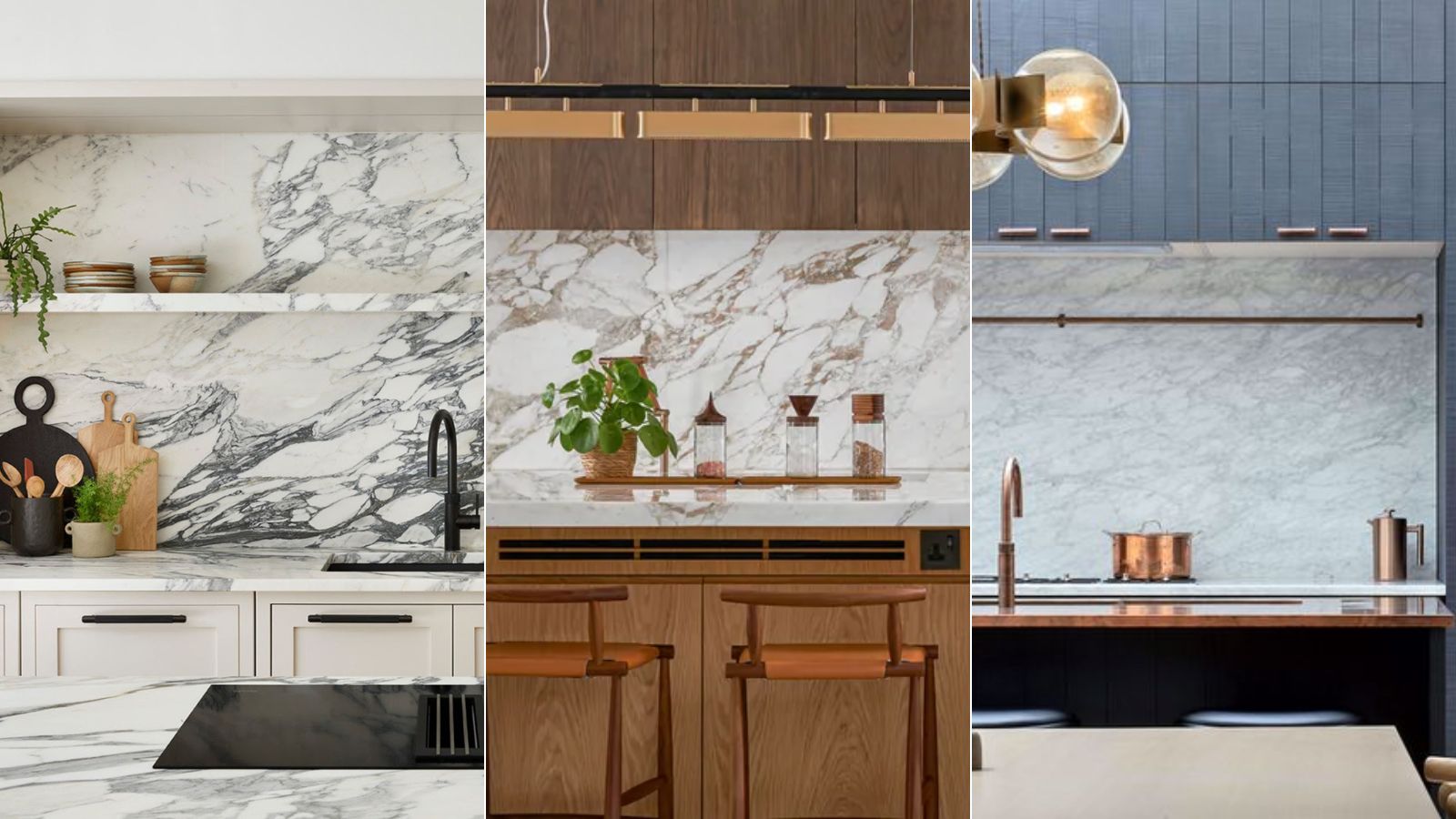
Planning a kitchen redesign or just interested in the interior design trends sweeping 2024? Well, at the top of our list of the most exciting kitchen additions interior designers are using are blended backsplashes.
Blended backsplashes are one of the most predominant kitchen trends in 2024, and while we often recommend avoiding making big investments based on trends, it's safe to say that blended backsplashes represent more than a fading fad, but rather a kitchen revolution. These kitchen backsplashes are characterized by their sleek and versatile design that is sure to make a statement.
We asked design experts what we should know about blended backsplashes. Here's what they said.
Blended backsplashes: this is what you should know
'Design trends come and go, but blended backsplashes are poised to be more than just a fleeting fad,' says Keely Smith, lead interior designer at JD Elite Interiors. 'Blended elements can transform even the most basic of kitchens into true works of art. By thoughtfully integrating different materials, textures, and patterns, homeowners create uniquely personalized spaces that feel as comfortable as they look.'
1. Definition
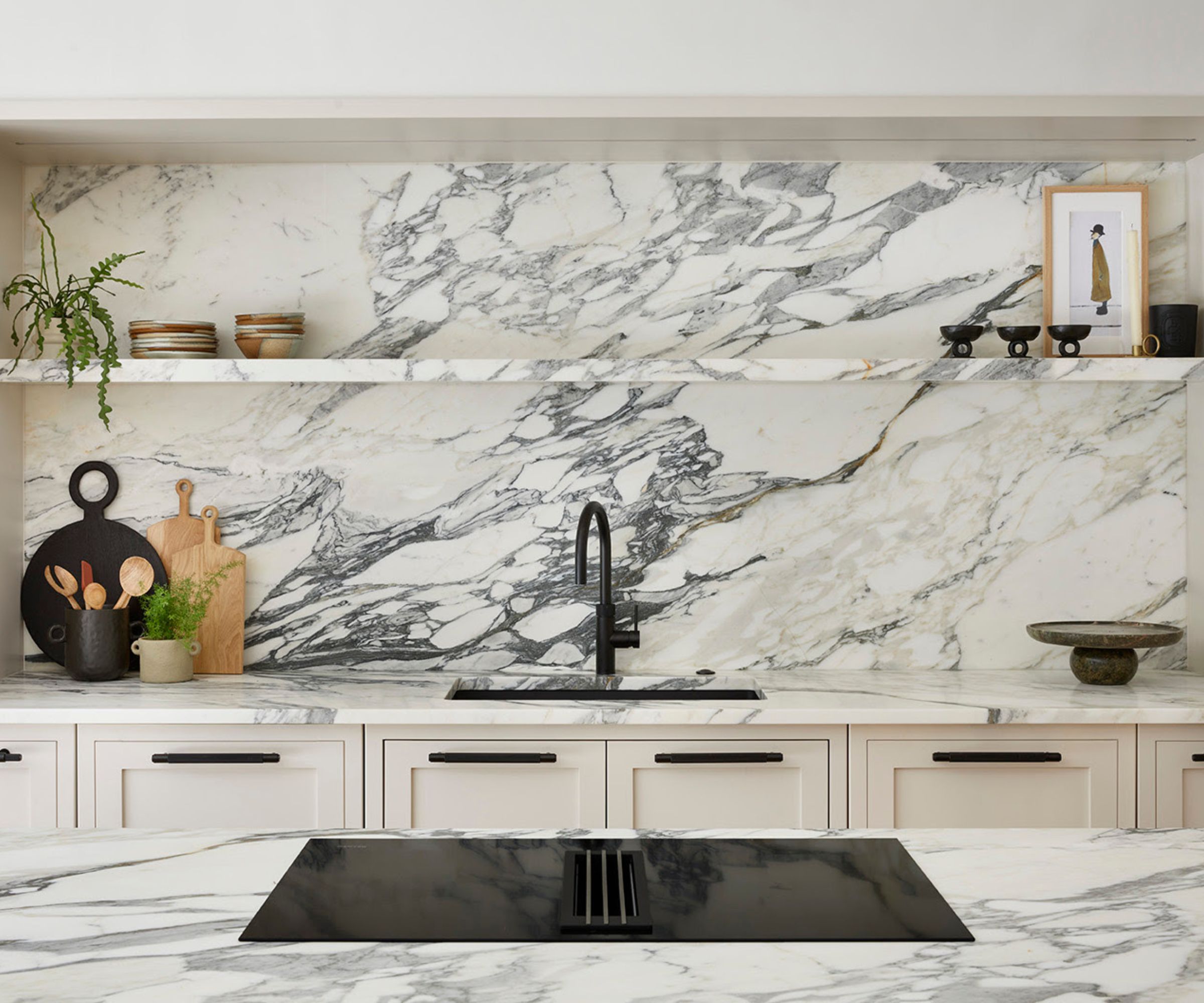
Blended backsplashes are the use of entire slabs behind a range or cooktop rather than the more common use of tiles.
'This trend is about combining two trends in one for a 'blended' approach,' explains Richard Davonport, Managing Director at Davonport.
'The first aspect of this trend is slab backsplashes. These are seamless, continuous backsplashes used to create a sleek and modern look. Whether it's a marble slab or a more budget-friendly porcelain/quartz alternative, the use of a single material for both countertops and backsplash adds an elegant and timeless touch to the kitchen.
'The next part is about layering a different material, color, finish, and texture as additional backsplash. This could be sat above the first layer and perhaps used at the back of open shelving.'
2. Design considerations
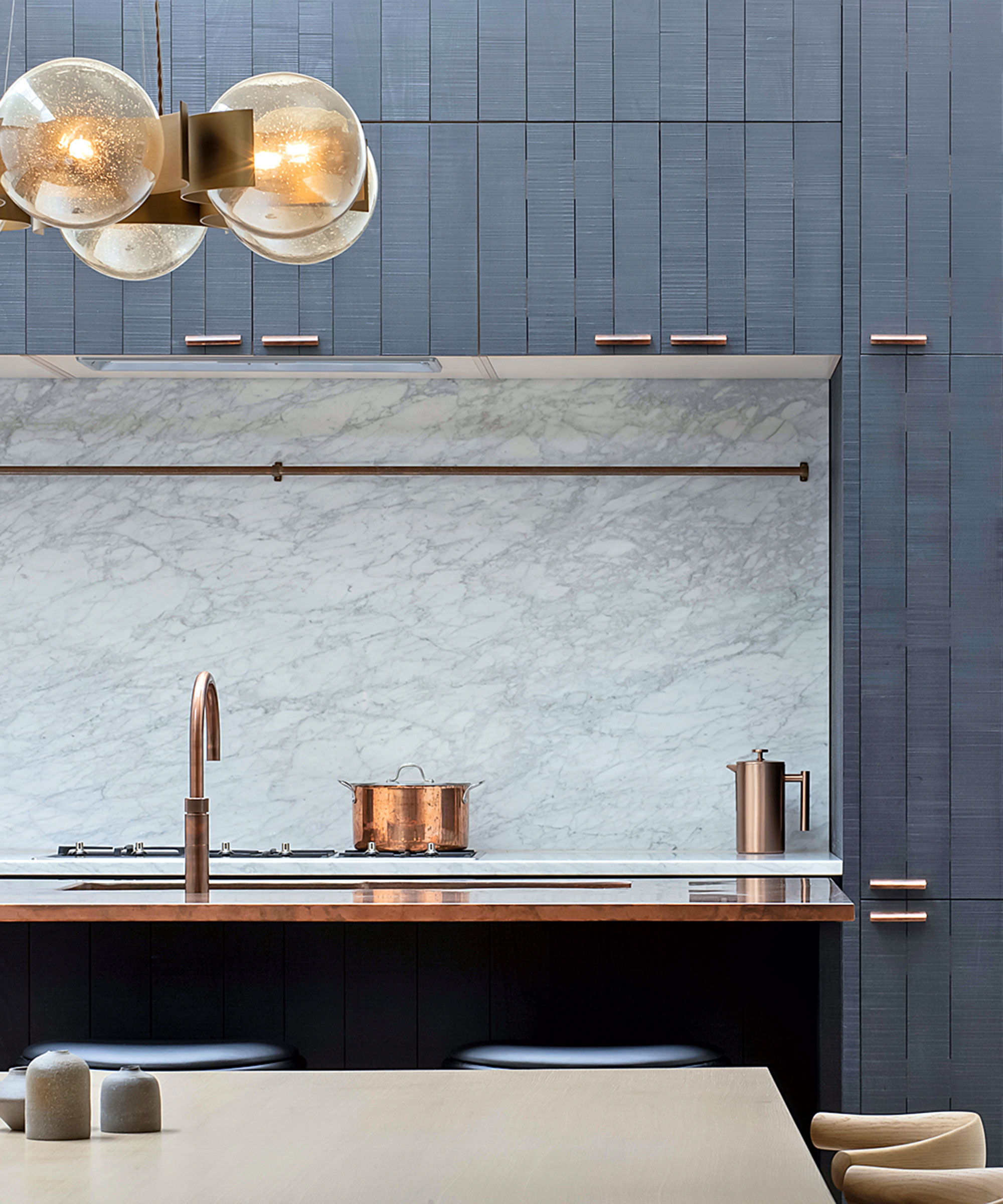
'Pulling off this approach takes more than just throwing a few kitchen tiles on the wall – it demands a nuanced understanding of balance, flow, and how to tie various elements together cohesively,' says Keely Smith.
'When considering materials, the benefit of choosing each will depend on factors like durability, maintenance requirements, and how they interact visually with other surfaces in the space.
'My advice is to experiment with material samples and really examine how colors and textures will blend before making a final selection since a good blended backsplash also fits seamlessly with the overall architectural style of the kitchen.'
'The choice of materials and colors is crucial in creating a blended backsplash,' adds Georgina Ross, interior designer and the Founder of Simply Tablecloths. 'A combination of different textures, such as matte and glossy finishes, or a mix of neutral tones with a splash of color, can produce a striking effect. The key is to maintain a balance that aligns with the kitchen's color scheme and materials.'
'Homeowners should also consider whether a subtle, blended look is preferred or if they want to make more of a bold statement,' says Keely Smith. 'The pattern adds personality but must be chosen carefully so as not to date the space too quickly. Meanwhile, on-trend additions like fluted details inject beautiful texture without being overpowering.'
3. Versatility and adaptability
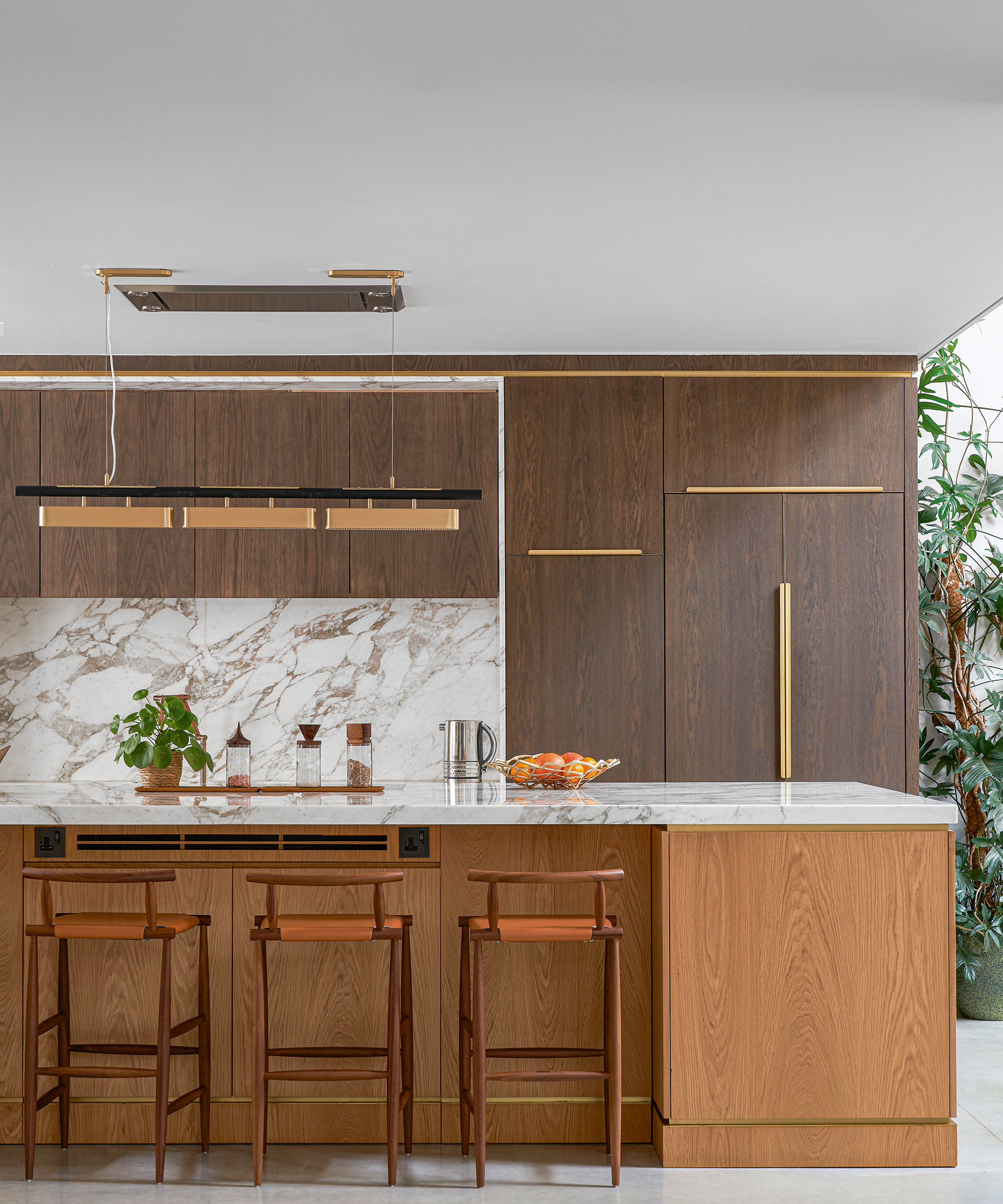
'The success of a blended backsplash lies in its ability to complement the overall kitchen style, color schemes, and decor themes,' explains Georgina Ross. 'Whether the kitchen is modern, traditional, or eclectic, the backsplash should enhance the existing design elements.'
A versatile backsplash allows for creative freedom in the rest of your decor, meaning you can continuously redesign your kitchen without this piece looking dated or out of place. So opting for a neutral color or material would be a wise choice.
4. Maintenance and cleaning
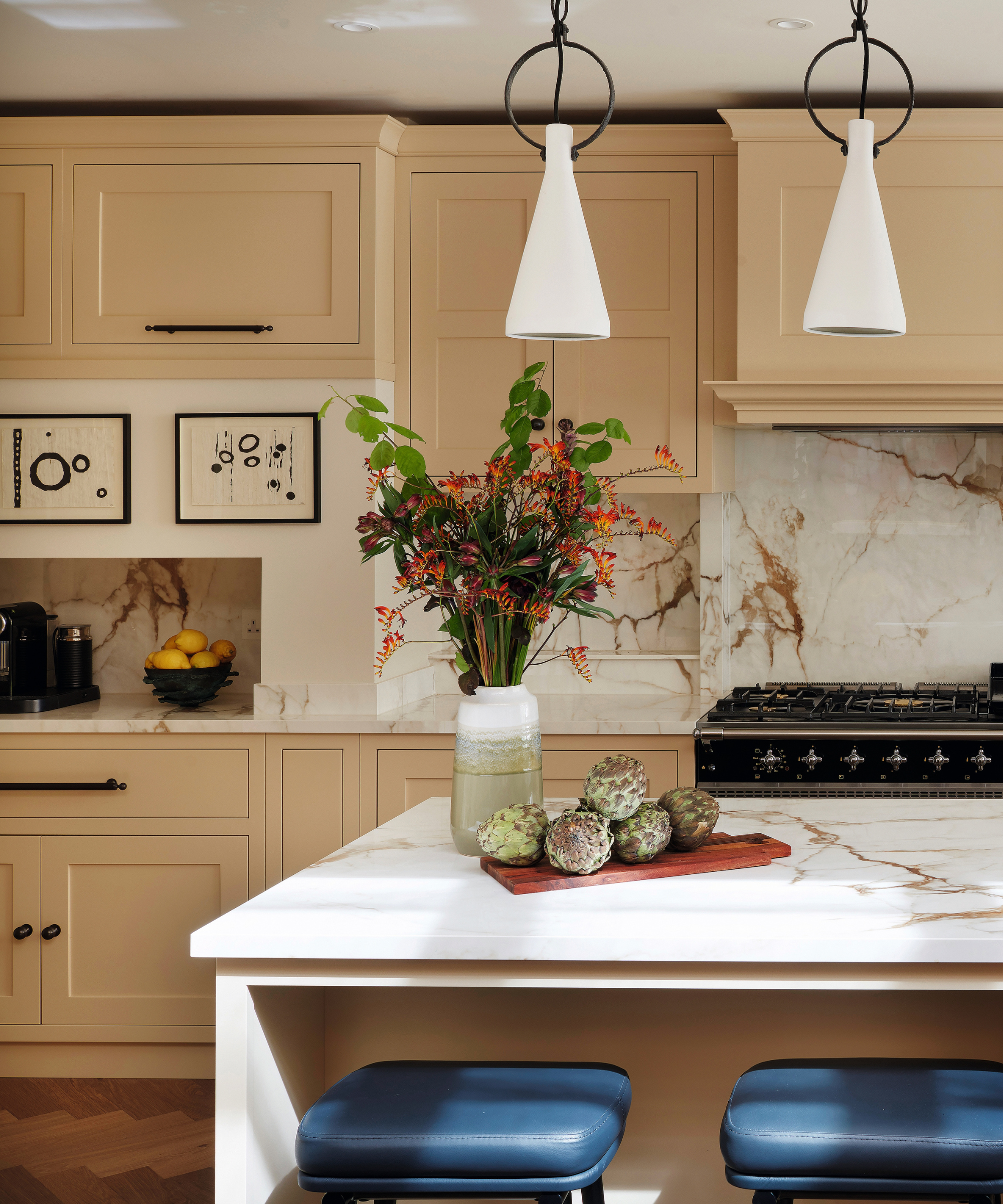
While it's important to select materials that align with your existing aesthetic (countertops and, to a lesser extent, your kitchen cabinets), it's also important to consider the functional requirements of a backsplash.
'Finishes that are easy to clean and maintain, such as ceramic or glass, are the best kitchen backsplash materials,' says Georgina Ross. 'Additionally, the choice of grout color and its sealing contribute to the backsplash's durability and ease of upkeep.' Luckily, with a blended backsplash, there are very few grout lines to worry about, making maintenance particularly straightforward.
5. Installation considerations
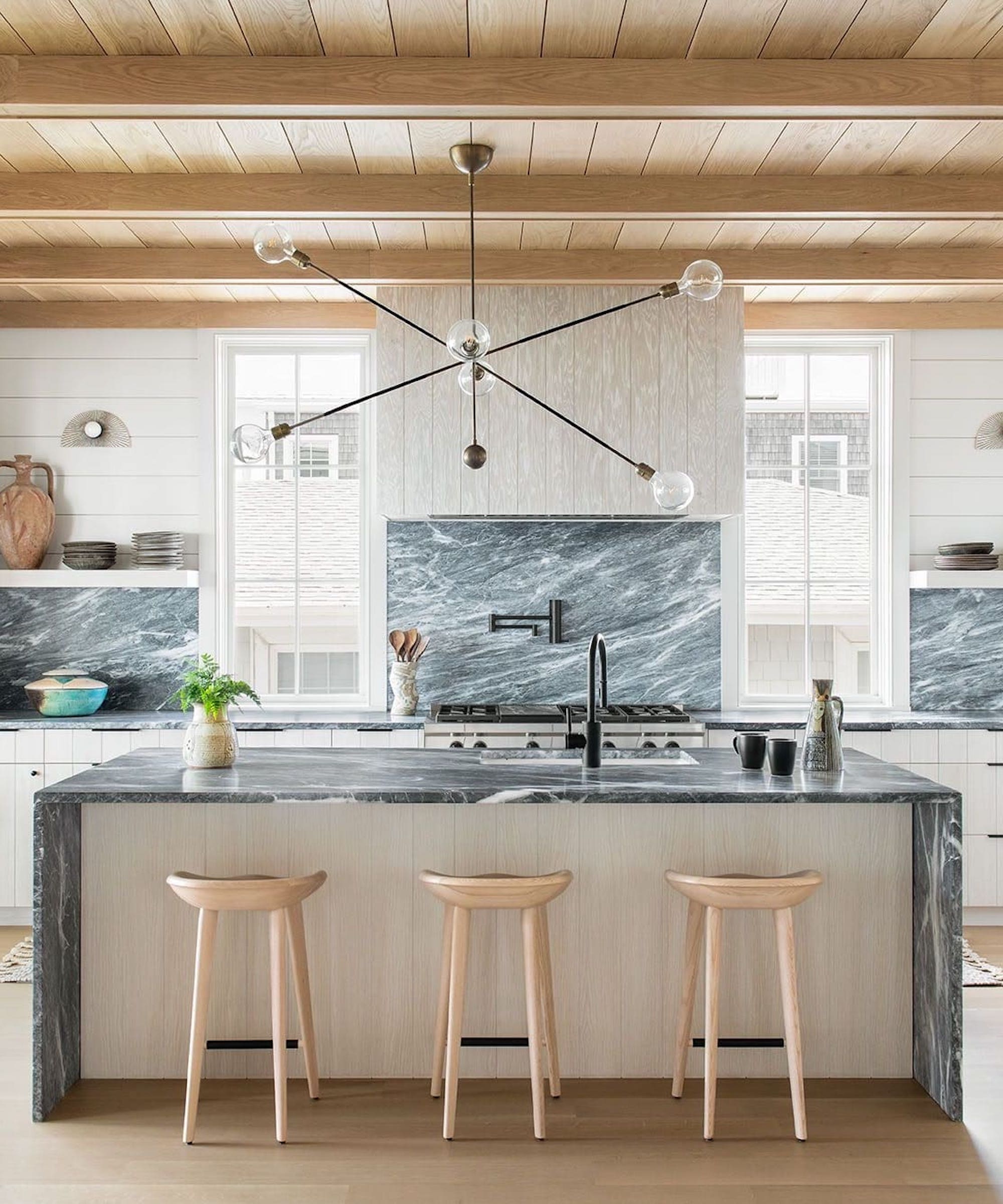
Before choosing to splash out on a blended backsplash, it's important to consider the installation requirements.
Since these backsplashes are often large pieces rather than numerous tiles, installation can be more difficult, especially if it needs to be integrated with existing features, such as a range hood.
Additionally, to achieve the seamless blend these backsplashes are famous for, you may need to consider how it should be installed to blend with your existing countertops or shelves. Unless you are particularly confident with your DIY skills, we suggest you explore professional installation options, which can be costly.
FAQs
How much does a blended backsplash cost on average?
'Now, turning to the numbers, on average, homeowners might invest between $800 to $2,500 for materials and installation. However, the actual cost varies based on factors such as chosen materials, kitchen size, and whether a professional installation is opted for,' says Linda Schroder, owner of Cash For Houses.
'Blended backsplashes offer a canvas for personal expression. Homeowners can create a unique design that reflects their personality and complements the overall decor of their home,' says Georgina Ross, interior designer. 'This customization makes blended backsplashes not just a trend but a timeless addition to any kitchen.'







